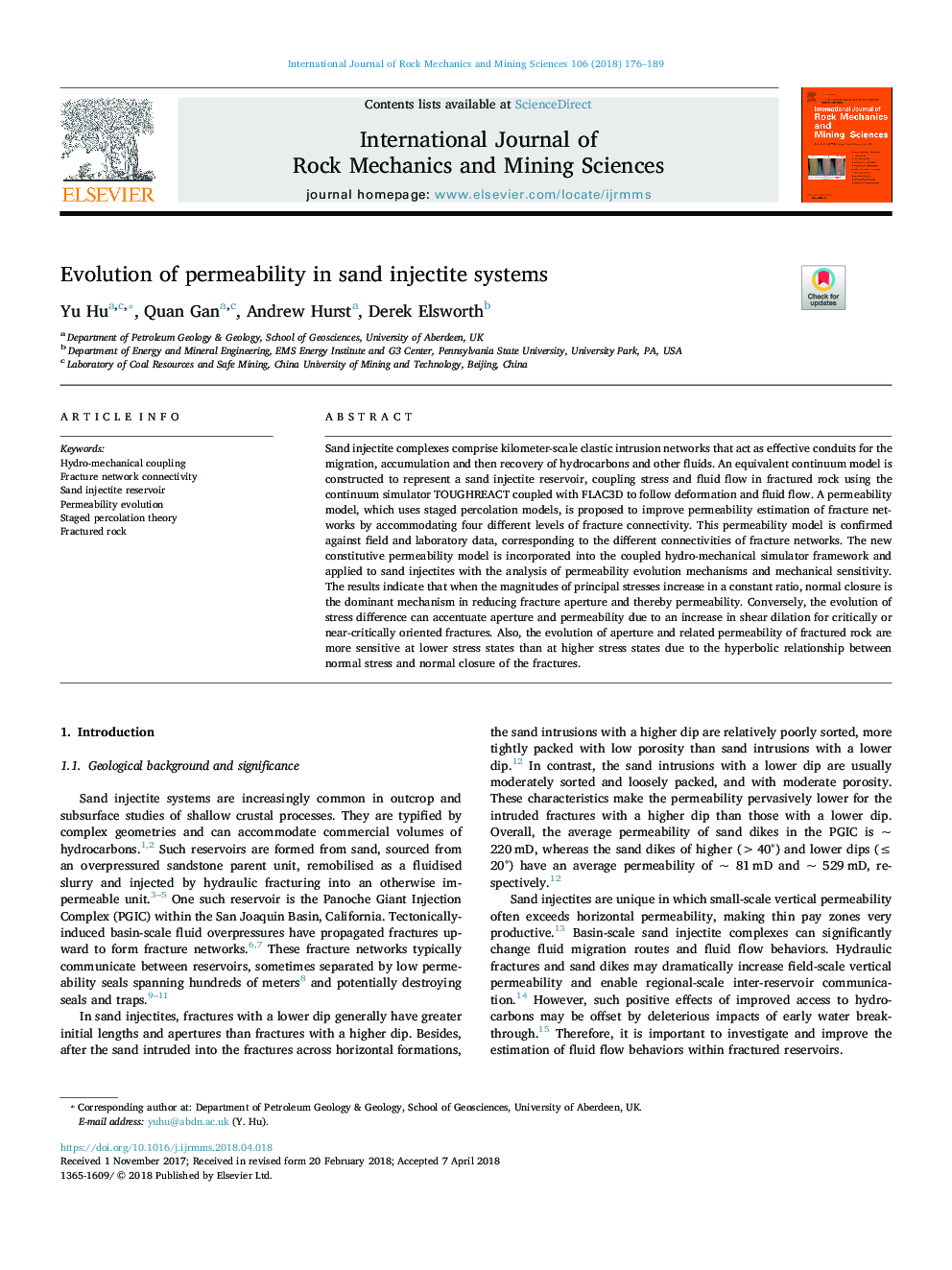| Article ID | Journal | Published Year | Pages | File Type |
|---|---|---|---|---|
| 7206198 | International Journal of Rock Mechanics and Mining Sciences | 2018 | 14 Pages |
Abstract
Sand injectite complexes comprise kilometer-scale clastic intrusion networks that act as effective conduits for the migration, accumulation and then recovery of hydrocarbons and other fluids. An equivalent continuum model is constructed to represent a sand injectite reservoir, coupling stress and fluid flow in fractured rock using the continuum simulator TOUGHREACT coupled with FLAC3D to follow deformation and fluid flow. A permeability model, which uses staged percolation models, is proposed to improve permeability estimation of fracture networks by accommodating four different levels of fracture connectivity. This permeability model is confirmed against field and laboratory data, corresponding to the different connectivities of fracture networks. The new constitutive permeability model is incorporated into the coupled hydro-mechanical simulator framework and applied to sand injectites with the analysis of permeability evolution mechanisms and mechanical sensitivity. The results indicate that when the magnitudes of principal stresses increase in a constant ratio, normal closure is the dominant mechanism in reducing fracture aperture and thereby permeability. Conversely, the evolution of stress difference can accentuate aperture and permeability due to an increase in shear dilation for critically or near-critically oriented fractures. Also, the evolution of aperture and related permeability of fractured rock are more sensitive at lower stress states than at higher stress states due to the hyperbolic relationship between normal stress and normal closure of the fractures.
Related Topics
Physical Sciences and Engineering
Earth and Planetary Sciences
Geotechnical Engineering and Engineering Geology
Authors
Yu Hu, Quan Gan, Andrew Hurst, Derek Elsworth,
